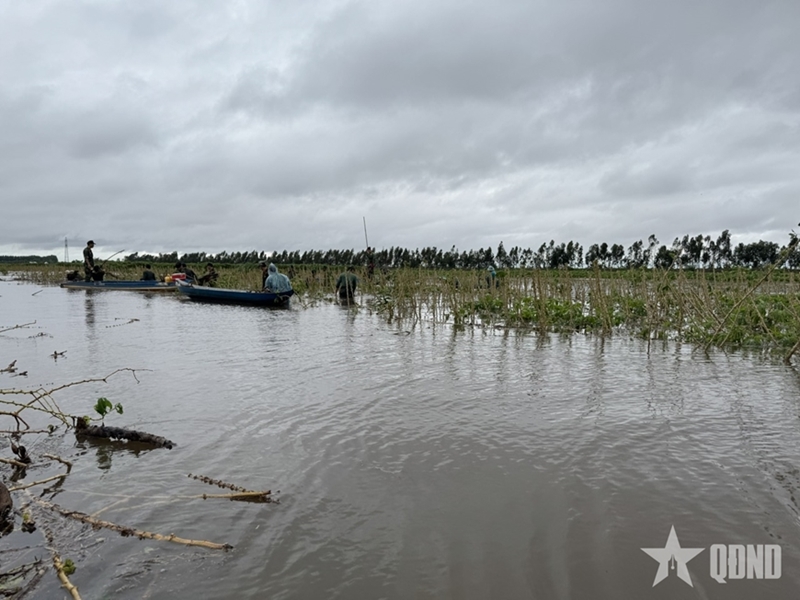Lam Dong province suffered the heaviest losses with 3,877 hectares of crops damaged. Across the central region, 790 hectares of fruit trees were affected, while more than 17,700 livestock and poultry were reported dead or washed away.
    |
 |
|
Floods in central Vietnam have submerged and damaged 4,871ha of rice and crops. (Photo: qdnd.vn) |
Floods also destroyed or swept away 56 houses, damaged 147 homes, and inundated 116,789 others. As of 7:00 on October 31, flooding had continued to affect 69 communes and wards, though the situation was gradually improving.
The disasters have so far left 24 dead or missing, and injured 34 others.
Eleven national highways, including parts of the Ho Chi Minh Road (Western branch) and the Truong Son Dong route, were blocked due to flooding and landslides. Traffic has since resumed on National Highways 9C, 14B, 14D, 14H, 14G, 24C, 40B, and the La Son - Hoa Lien section of the Ho Chi Minh Road.
In Quang Tri province, several areas faced serious inundation and landslides, though traffic on provincial road 571 was restored on October 30. In Hue city, 38 landslide sites were recorded, some severe, along with blockages on the Western branch of the Ho Chi Minh Road and provincial routes, where floodwaters are now receding.
Da Nang reported damage to nearly 1.9km of roads and about 62,845 cb.m of landslide debris along national and rural routes. In Quang Ngai province, over 200 landslide sites spilled some 60,000 cb.m of soil and rocks onto roads, damaging 80 communal routes and disrupting passenger train services.
Around 438,000 customers in 109 communes and wards across four provinces and cities remain without electricity.
Relevant ministries and localities have been directed to take urgent, coordinated measures to address the aftermath, ensure food, water and medicine reach isolated areas, and relocate displaced families. Authorities are also tasked with assessing damage to crops, property and infrastructure, and mobilizing all available resources to restore livelihoods and essential services, with priority given to schools, healthcare facilities, electricity and telecommunications networks, as well as sanitation to prevent post-flood disease outbreaks.
The MAE has instructed localities to swiftly restore agricultural production and minimize long-term impacts on the sector. Provinces have been asked to complete assessments and propose food aid for affected households by November 1, ensuring timely support and stabilization of people’s lives.
Source: VNA